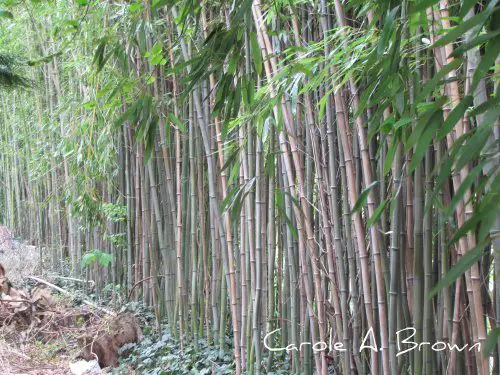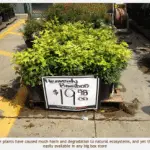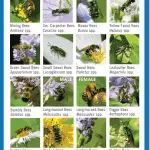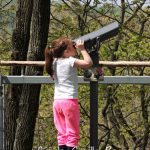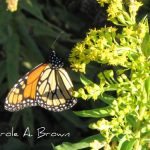The Most Hated Plants series is devoted to the worst of the worst invasive plants. These plants are causing great ecological harm and habitat devastation for wildlife, plus the cost of managing these plants is billions of dollars of taxpayer money every year.
Knowing these plants will help you make much healthier decisions for your wildlife garden because you won’t plant them. You won’t purchase them from your local nursery, no matter how persuasive they are about the wonderful qualities of these noxious invaders.
The photo above is taken across the street from my house at my neighbor’s. When he bought this house several years ago, he had to bring in a bulldozer to remove the bamboo forest that had engulfed his backyard. It was a huge effort and a big expense.
But as you can see, they did not remove all of the bamboo, and now he’s going to have to spend that money all over again.
Several hundred species of bamboo have been imported into this country by the horticultural industry for use as ornamental plants. 24 of these are in the genus Phyllostachys, the most invasive of these plants.
I would love to see the day when we hold the horticultural/landscaping industry accountable for these actions, because as taxpayers we are spending $138 BILLION every year in an attempt to manage these plants.
In Philadelphia we have been blessed with one of the largest urban parks in the country. Fairmount Park covers 9200 acres and claims 10% of the land area in Philadelphia.
Sadly, much of this park is overrun with invasive plants, including bamboo, which outcompete native plants and provide nothing for wildlife.
A drive along the Wissahickon Creek in this park will show you bamboo, Paulownia Trees, Norway Maples, and many other invasive plants which have disturbed the natural ecosystem of the park.
A huge chunk of the parks operating budget every year is spent in controlling the spread of these plants.
I dream of the day when we will stop planting these noxious invaders, when nurseries will stop selling them, or their sale will be prohibited. That would give us $138 billion savings that could be put to much better use in creating habitat for wildlife, instead of managing these plants that are destroying habitat and ecosystems.
More From Ecosystem Gardening:
Submit your review | |
Respectfully, I disagree with the one-sided review of Bamboo. While it’s true that running bamboo can be problematic if it is not properly planted with the correct screening and so forth, clumping bamboo is usually not problematic.
Bamboo is an underutilized and underappreciated plant here in the west. But in Asian countries there are bamboo gardens and forests that are truly beautiful, even mystical in their appearance. Some bamboos can be used for food if the sprouts are harvested early in the season. Bamboo runs in size from 3 inches tall to what they call timber bamboo which, as the name in furs can be used to actually construct buildings, bridges, and so forth. Many cultures use bamboo for their native flutes, and especially in Japan, one specific kind of bamboo is highly valued for its flute making potential.. so rather than hate this beautiful plant, dig down (pun intended) and learn how to grow it responsibly. It does require some care, but what activity worthwhile does not require that attention paid to it? Happy gardening one and all!

